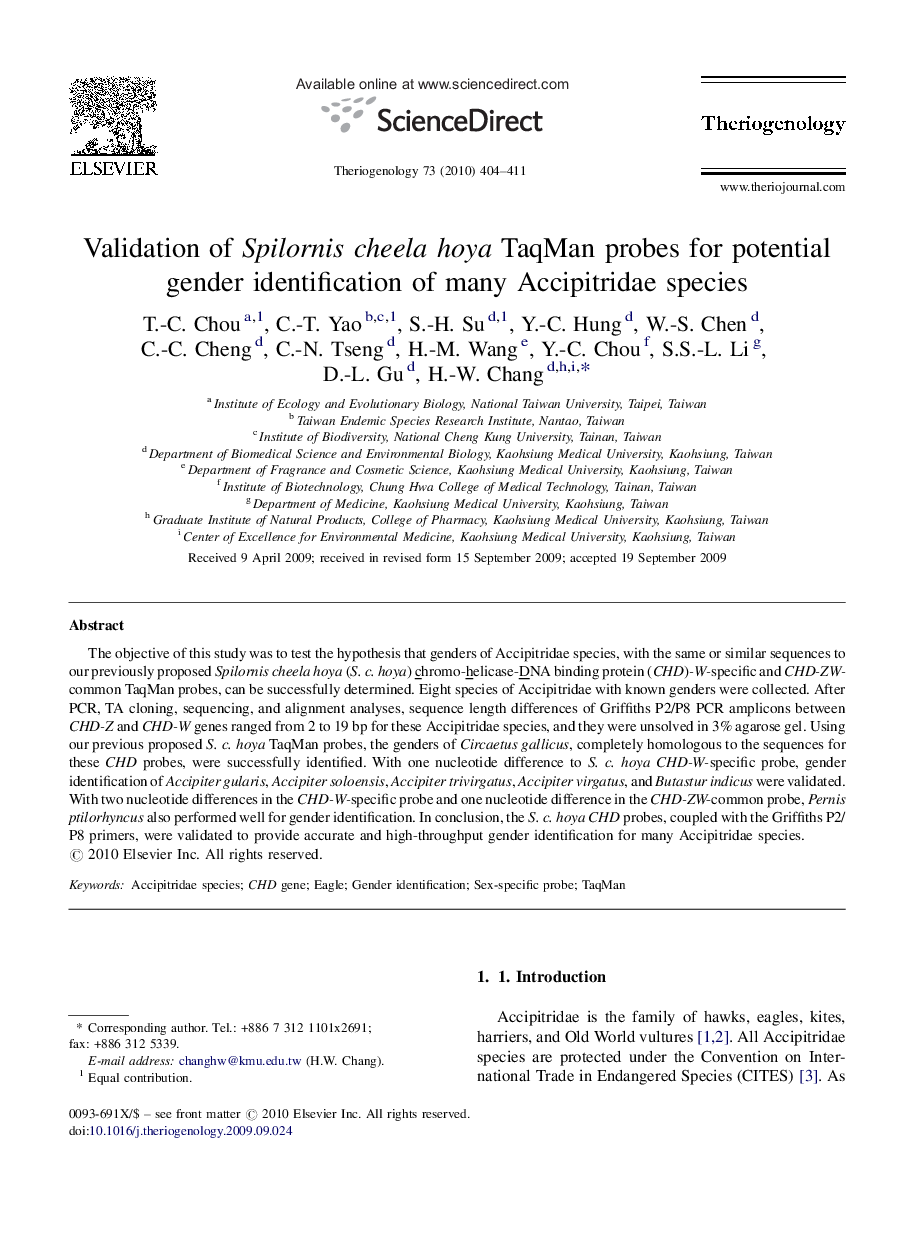| Article ID | Journal | Published Year | Pages | File Type |
|---|---|---|---|---|
| 2097968 | Theriogenology | 2010 | 8 Pages |
Abstract
The objective of this study was to test the hypothesis that genders of Accipitridae species, with the same or similar sequences to our previously proposed Spilornis cheela hoya (S. c. hoya) chromo-helicase-DNA binding protein (CHD)-W-specific and CHD-ZW-common TaqMan probes, can be successfully determined. Eight species of Accipitridae with known genders were collected. After PCR, TA cloning, sequencing, and alignment analyses, sequence length differences of Griffiths P2/P8 PCR amplicons between CHD-Z and CHD-W genes ranged from 2 to 19Â bp for these Accipitridae species, and they were unsolved in 3% agarose gel. Using our previous proposed S. c. hoya TaqMan probes, the genders of Circaetus gallicus, completely homologous to the sequences for these CHD probes, were successfully identified. With one nucleotide difference to S. c. hoya CHD-W-specific probe, gender identification of Accipiter gularis, Accipiter soloensis, Accipiter trivirgatus, Accipiter virgatus, and Butastur indicus were validated. With two nucleotide differences in the CHD-W-specific probe and one nucleotide difference in the CHD-ZW-common probe, Pernis ptilorhyncus also performed well for gender identification. In conclusion, the S. c. hoya CHD probes, coupled with the Griffiths P2/P8 primers, were validated to provide accurate and high-throughput gender identification for many Accipitridae species.
Related Topics
Life Sciences
Agricultural and Biological Sciences
Animal Science and Zoology
Authors
T.-C. Chou, C.-T. Yao, S.-H. Su, Y.-C. Hung, W.-S. Chen, C.-C. Cheng, C.-N. Tseng, H.-M. Wang, Y.-C. Chou, S.S.-L. Li, D.-L. Gu, H.-W. Chang,
